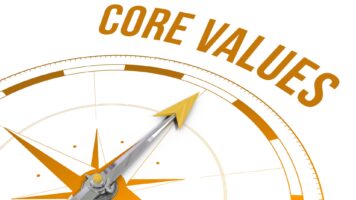DIY Leadership

Personal Development
August 5, 2010
Jane Perdue
Executive Director, The Jane Group
Topics
Alignment, Change, Character-based Leadership, head, heart, motives, StrengthsI'm starting with the man in the mirror
I'm asking him to change his ways
And no message could have been any clearer
If you wanna make the world a better place
Take a look at yourself, and then make a change
~Man in the Mirror, Michael Jackson
Leaders use their heads to manage and their hearts to lead. If you aspire to be that kind of leader, getting your interactions with others right depends on you getting you right – first.
And getting you right requires:
…introspection: casting a caring yet clinical eye on your interests, skills, qualities and values; and
…self-awareness: a non-judgmental understanding of how you respond, react, engage and interact.
Getting to know what makes you tick requires a super-sized serving of fortitude – sometimes that mirror reflects self truths we’d prefer not to know. It’s much easier to point a finger at the management teams of BP, Toyota, Lehman Brothers and on and on and declare that their leadership practices need to change. That’s really tackling the 800 pound gorilla! A gorilla that’s of a scale and scope beyond our reach.
Yet what is within our reach is stopping to consider our very own leadership legacy. Is it a good story? A bad story? A so-so story that could be better? If so, that’s an 800 pound gorilla that can be conquered one bite at a time. Get connected to what goes on in your head and your heart, and then use that wisdom and knowledge to connect with, lead and inspire others.
A couple bites to chew on…
- Your hot buttons. Get familiar with what sets you off and prepare ahead of time. One of my hot buttons is missed deadlines, especially those that come and go without advance notice that there’s a problem. My workaround has been to use a two-part ground rule that communicated early on: deadlines are jointly negotiated and a heads-up regarding barriers to completion is an expected practice and courtesy.
- How you like to learn. Do you learn best by doing? Reading? Touching? Seeing? Noodling it over? Tailor your own practices to fit your style. Share those insights with those around you so they don’t have to waste time guessing.
- Your top five values. Many life and career mistakes, and heartache, can be avoided by making the time to inventory those principles that are “must haves” in your life. Taking a wrong-fit job will become a thing of the past as will feeling unfulfilled and disengaged.
- What you are really good at doing. Get a firm grip on your strengths and put yourself in situations where you can maximize them (without over-playing them).
- Personal skills that are lacking. Knowing your weakness is really strength. If you’re an introvert and meeting strangers makes your stomach knot up, the nonprofit job you’re considering that requires you to regularly network with community leaders to raise funds probably has a skill gap between your preferences and the job requirements that’s too large to bridge successfully.
I’m fond of saying that real leaders think more about we and less about me. To achieve such a thoughtfully self-aware position, real leaders must first focus on themselves, getting firmly grounded in their own emotional intelligence so they can be successful in leading others.
I'm gonna make a change,
For once in my life
It's gonna feel real good,
Gonna make a difference
Gonna make it right . . .
~Man in the Mirror, Michael Jackson
Photo © thereisnosquare





[…] This post was mentioned on Twitter by Mike Henry Sr., Mike Henry Sr., Michael McKinney, Jessica Henry, Vicky Henry and others. Vicky Henry said: New Post: DIY Leadership http://bit.ly/asS0Lr (via @mikehenrysr) […]
Thank you Jane for this article! Too many leaders forget that, as you said, true leadership starts with the leader itself.
It involves answering three, simple to ask but hard to answer, questions:
1. Who you are?
2. Whose you are?
3. Are you the example?
One great example of a leader that changed the world is Jesus Christ. Here’s how he answered those three questions.
Who you are is knowing your strengths and weaknesses, the vision of what you’re trying to achieve, your mission to achieve it and the values that will guide your journey.
Too many are trying to lead other without even knowing who they are and where they’re going.
Jesus know exactly who He was and what His mission was.
“Just as the Son of man came, not to be ministered to, but to minister and to give his soul a ransom in exchange for many” – Mt 20:28
Whose you are is knowing who you’re trying to please. What’s your main audience in your life? This thought can restore you focus instantly on what matters most.
Once again, Jesus knew very clearly whose He was:
“I cannot do a single thing of my own initiative; just as I hear, I judge; and the judgment that I render is righteous, because I seek, not my own will, but the will of him that sent me.” Jo 5:30
Above all, you have to be the example of what you’re trying to accomplish as a leader to be effective.
Jesus leadership style was based on leading by example. How different is the leadership style of most leaders today. Jesus had a message for them:
“Or how can you say to your brother, ‘Allow me to extract the straw from your eye’; when, look! a rafter is in your own eye? Hypocrite! First extract the rafter from your own eye, and then you will see clearly how to extract the straw from your brother’s eye.” Mt 7:4-5
I really hope that we can take this information, apply it in our lives and change the world!
Best regards,
Bruno Coelho
Bruno – Getting in touch with one’s core strengths – and weaknesses – is indeed fundamental to effective and meaningful leadership of self and others. Love your inspirational hope that character-based leaders do change the world…starting with ourselves!
Jane – wonderful article. Self awareness and understanding is paramount to leading. I have reported to more than one Pres/CEO of large organizations who had blind spots when it came to the impact of their own words and behaviors. If they haven’t been developed to remain constantly aware of how they are evolving, based on responsibility, accountability, etc., they easily lose sight of the ripple effects they create. I’m passing this on to a few people who will find it extremely relevant and useful.
Teri – Thanks much for your kind words about the article. Your observation that the blind spots we have about ourselves creating ripple effects within the organization and with others is spot on. Many leaders aren’t aware of the pebbles they’ve dropped into the pond. Sounds like you are providing good coaching and counsel to folks with awareness blind spots!
You’re right: self-reflection can be pretty scary! But I believe it was Socrates (correct me if I’m wrong!) who said that the unexamined life is not worth living. We owe it to ourselves as much as to our employees to know who we are.
Heath –
No correction needed — it was indeed Socrates who said the unexamined life isn’t worth living! Self-reflection, combined with self-awareness, allows us to connect with ourselves and then use that knowledge/wisdom to connect with, lead and inspire others! You are so right that we owe it to ourselves and to others to make this happen.
Jane,
Here’s what I’m taking from this post: “Knowing your weakness is really strength.”
I just love that statement. I’m not forgetting it.
Thanks for your article. It’s filled with experience and wisdom.
Best to you,
Dan
Dan – I so love it when a “thought nugget” jumps out so you can grab it and make it your own! Now you can add to the ripples – in a most positive way – that Teri talked about. Smiles and thanks!
Big smiles and bigger thanks to all for sharing so generously!
Jane,
This is my six-year olds favorite song! Why? I have no idea, but the other day, I tried to explain (in six-year-old terms) what the song means. Perhap she is a character-based leader in training? 🙂